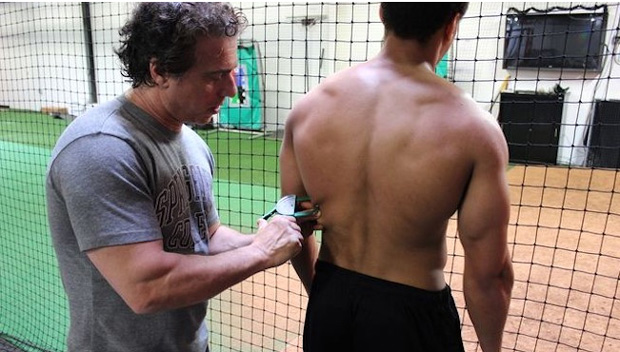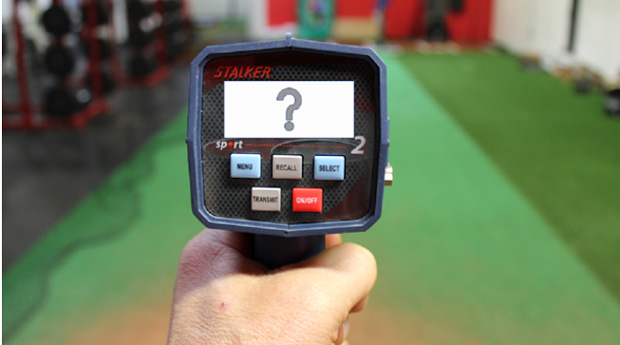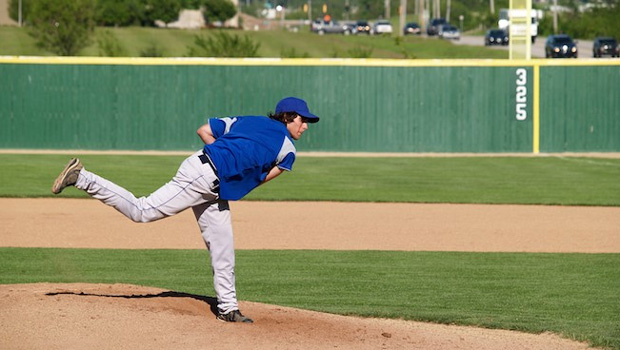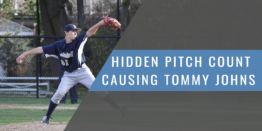| Does Your Pitching Velocity Dip During the Season? Here's Why |
| By: Nunzio Signore
Provided by: STACK A high school pitcher trains his butt off during the offseason but stops completely when the season actually begins. I see it all too often. In my opinion, the in-season period is the most important time for athletes to listen to what their body is telling them. The long grind of a season takes its toll on pitchers differently. No two pitchers show the exact same response to stress. But no one's immune to that stress, and one common sign a pitcher may not be listening to his body is an in-season drop in velocity. From a training standpoint, several steps can be taken to help combat this in-season dip in velocity and ensure you're bringing the heat every game. Here are some of the big factors that can cause a loss in velocity over the course of a season and what you can do to better combat the issue. 1. You're Losing Strength Building your physical capacity in the offseason is paramount to optimize performance on the mound. On the other hand, in-season training to continue maintenance and development of those traits during your competitive season is equally, if not more, important. However, many athletes fail to realize just how important in-season training truly is to sustain elite performance. Medicine and Science in Sports and Exercise published a review of several studies on the subject that looked at rowers and power athletes. While general strength doesn't drop all that much if you go a month without a workout, specialized sport-specific muscle fibers start to change in as little as two weeks without a workout. For pitchers, loss of stability (eccentric strength) in the lead leg at foot strike and power (concentric strength) in the back leg during the stride phase are two big areas you'll see suffer without sufficient in-season training. This can cause a pitcher to start missing up in the zone due to an inconsistent release point as well as experiencing a drop in velocity due to applying less force into the ground with their back leg (what I also call the "gas" leg). I tell my guys all the time to try and get in at least 2-3 days of strength training per week. Volume wise, the heaviest day should come right after an appearance on the mound. This guarantees at least several days to get in some good quality strength training before they toe the rubber again. As for summer ball and relievers, if you toss three innings or more, you can hit a big lift the next day. This will go a long way in helping increase appetite and strength, keeping weight on, and managing that "controlled fall" I have referred to before. 2. You're Losing Body Weight
Gaining muscle will help you throw harder. Losing muscle will cause you to throw softer. There are numerous studies which show a high correlation between an increase in body weight and an increase in pitching velocity. The average weight of an MLB pitcher has gone up substantially in the past 20 years, so it should come as no surprise that pitchers are now throwing harder than ever. If you're losing a substantial amount of weight during the course of the season, you're almost guaranteed to see a significant drop in your velocity. If you don't consume enough calories and protein, your body will start cannibalizing muscle for fuel. And if you don't perform adequate strength training, your muscle mass will gradually decrease. Simply keeping on as much muscle as possible throughout the course of your season is one of the best ways you can combat a loss in velocity. As a general rule of thumb, baseball players should carry anywhere from 10-15% body fat. During summer ball, young players are often competing in several games a day at tournaments underneath the scorching sun. The fact they're on the road can also limit their options for food and result in less-than-ideal sleep quality. This is a perfect recipe for losing muscle throughout the season, which makes proper nutrition and training all the more important. Increasing your calorie and protein consumption during the season might not always be convenient, but it can play a huge role in helping you stay strong and effective over the course of the season. 3. You're Losing Mobility There are numerous studies that show correlations between loss of mobility and drops in velocity as well as an increased risk of injury. It's well known that pitchers can easily lose motion in their throwing arm (as much as 10 degrees of internal rotation after just one outing) throughout the course of a long baseball season. It's also no secret that the protocol for pre-game warm-ups in baseball can be a bit lax, at best. If you're simply getting off the bus, throwing 20 pitches and running a few laps before you step on the mound, don't expect your velocity to top out until somewhere around the third inning. This is all the more reason for having a "set in stone" 20-25 minute warm-up routine that focuses on soft tissue work, full-body mobility and cuff activation. This is even more important early in the season, when the temps at game time in the northeast and midwest can be in the 40s. 4. You're Not Sleeping Well
Believe it or not, I feel that this point is the biggest velocity-sucker in this entire piece. Poor sleep quality severely affects our circadian rhythm, compromising an athlete's ability to recover from daily stressors. Whether that stress be from a practice, a game, a late night out, stress from school or relationship issues, 9-11 hours of sleep during the developmental years is paramount. After that, a good 8-10 hours per night for more mature athletes will suffice. Let's face it, toward the end of the spring season and when summer ball is upon us is when most young athletes' sleep routines go south. No two things affect body weight more than poor sleep and poor eating habits, and I just outlined how a loss of body weight equals lower readings on the gun. Here are some simple tips on how you can improve our sleep quality. 5. You're Experiencing Overuse
From my experience, many of the guys who fall prey to the "velo roller coaster" throw at or near velocities that sit between 85-90 mph. These guys have a tendency to get used a lot on the mound and often also as two-way players. This cuts their amount of recovery time down significantly. Combine this with points 1 and 2 above and you get a recipe for sudden and unexpected drops in strength and/or velocity. This is the reason why guys who are sitting under 80 mph don't find themselves dealing with inconsistent velocity numbers as often. Truth be told, they just don't see as much playing time, so weight loss and fatigue don't really come into play quite as frequently. As for the pro guys sitting at 93 and above, they're older, stronger and more experienced. They make sure they're getting their reps in the weight room and consuming the extra calories during the season (especially the summer months) to ensure they're at optimum levels when called upon. 6. You're Injured
The bottom line is you can't throw effectively if you're injured. No one can. You may think you're throwing hard, but 100% intent while injured is much less than that same intent while healthy. You're only as strong as your weakest link. You'll often be better off both in the short-term and in the long-term by taking some time off to allow your injury to heal rather than trying to battle through it. If you've got the topics I've listed above in check, you're already ahead of the game. The takeaway is to stay strong, eat and sleep enough, and get in your daily mobility work. If you tick those boxes, you'll be at your best come playoff time! Photo Credit: MarioGuti/iStock, CynthiaAnnF/iStock |











